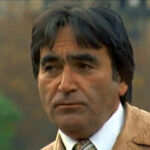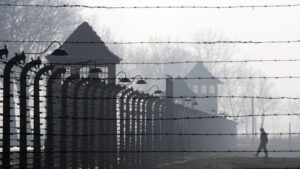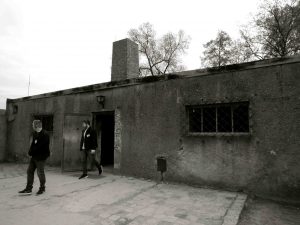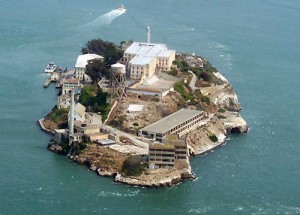guards

 While escape seemed impossible, there were a number of successful escapes from the horrific Nazi death camp known as Auschwitz. Unfortunately, there were also many failed attempts. These escapes and attempted escapes happened, because where people are held in captivity, they will rebel and try to find a way out, and when death is inevitable, escape become less risky. Hitler wanted all the Jews dead, and while he might have tried to hide his true intentions from the world, he certainly didn’t hide it from the Jews themselves.
While escape seemed impossible, there were a number of successful escapes from the horrific Nazi death camp known as Auschwitz. Unfortunately, there were also many failed attempts. These escapes and attempted escapes happened, because where people are held in captivity, they will rebel and try to find a way out, and when death is inevitable, escape become less risky. Hitler wanted all the Jews dead, and while he might have tried to hide his true intentions from the world, he certainly didn’t hide it from the Jews themselves.
Most prisoner escapes took place from worksites outside the camp. The attitude of local civilians was of immense importance in the success of these efforts. Some of the escapees tried to get the word out that the camps were not just work camps, but were also death camps, and that the people should fight with everything they had to avoid going. Of course, all too often, any reports were suppressed as much as possible by the Germans, and for the most part, the reports did little to no good.
On escape that particularly touched me was the escape of two Slovakian Jews, Rudolf Vrba (born Walter Rosenberg) and Alfred Wetzler, escaped in April 1944. They knew the consequences of the were caught, and the men in their barracks knew the consequences of helping them, or even being in the same barracks with them. Nevertheless, all of them felt that the risk was worth it to try to get the truth to the outside world.
Trust was vital, in an escape. Vrba and Wetzler came from the same town, so they knew each other well, and could trust each other. The men had been working on this escape idea for a while, coming up with plans and then rejecting them, because they couldn’t work. Finally, Wetzler came to Vrba with a plan that just might work. They would hide in a pile of wooden planks and after the three-day search for the escapees was finished,  they would escape and head South. The plan was good, but there were still a number of obstacles to maneuver. The first group to attempt the escape were later caught in a village south of the camp, but the wooden plank plan had worked, and the captured prisoners did not reveal their strategy.
they would escape and head South. The plan was good, but there were still a number of obstacles to maneuver. The first group to attempt the escape were later caught in a village south of the camp, but the wooden plank plan had worked, and the captured prisoners did not reveal their strategy.
So, Vrba and Wetzler waited two weeks, and put their plan in motion. The had a friend help them by pulling the planks over then, and covering the area with something to hid e the scent of the men from the dogs. The men expected the alarm to sound at the 5:30pm roll call, but no alarm sounded. The men began to think that someone had told of their location, and that the guards would be coming any minute, but the alarm went of shortly after 6:00pm and the sound of boots and dogs was everywhere. It was all they could do not to scream in terror. Nevertheless, they held their peace and stayed put.
The men laid motionless for three days with no food or water. They were stiff and cold, but finally, they heard the guards call off the search, so that night they decided to come out of the wood pile and make their escape. However, the planks wouldn’t budge. They pushed and pushed…almost to the point of panic. They determined that they would not die there, they gave it one last effort, and the planks gave way. They came out into the night, made their way to the nearest fence and crawled under the barbed wire. I’m quite sure they never wanted to see a fence again.
The ran for the woods, traveling at night, and hiding by day. They were seen by a few people, but thankfully everyone who saw them was sympathetic to their cause and helped them on their way. Finally, they crossed the 
 border, and they were free at last. They went to Zylina, where they met secretly with officials from the Slovakia Jewish Council and gave them a secret report on Auschwitz. An in-depth report was drawn up in Slovak and German. The plan was to get the report to the world before another train load of Jews could come to Auschwitz, and the men had done their part. They had done all they could. Unfortunately, the report did not get to those who needed to hear it, and the killing would go on until January 27, 1945, when Auschwitz was finally liberated.
border, and they were free at last. They went to Zylina, where they met secretly with officials from the Slovakia Jewish Council and gave them a secret report on Auschwitz. An in-depth report was drawn up in Slovak and German. The plan was to get the report to the world before another train load of Jews could come to Auschwitz, and the men had done their part. They had done all they could. Unfortunately, the report did not get to those who needed to hear it, and the killing would go on until January 27, 1945, when Auschwitz was finally liberated.
 When my husband, Bob Schulenberg and I went to San Francisco for the first time, we wanted to make sure we saw all the sights of the area. I was especially interested in Alcatraz Prison, partly because of it’s unique location, but also because of its history. While visiting the prison, we had the opportunity to visit with an author, who had actually been an inmate at the prison. Jim Quillen recounted the years he spent at the prison, the corruption, abuse, and the Battle of Alcatraz, which took place from May 2, 1946 to May 4, 1946. The battle began with an unsuccessful escape attempt, and ended with the deaths of two guard, William A. Miller and Harold Stites, as well as three of the inmates. Eleven guards and one inmate were injured, and two convicts were later executed for their actions.
When my husband, Bob Schulenberg and I went to San Francisco for the first time, we wanted to make sure we saw all the sights of the area. I was especially interested in Alcatraz Prison, partly because of it’s unique location, but also because of its history. While visiting the prison, we had the opportunity to visit with an author, who had actually been an inmate at the prison. Jim Quillen recounted the years he spent at the prison, the corruption, abuse, and the Battle of Alcatraz, which took place from May 2, 1946 to May 4, 1946. The battle began with an unsuccessful escape attempt, and ended with the deaths of two guard, William A. Miller and Harold Stites, as well as three of the inmates. Eleven guards and one inmate were injured, and two convicts were later executed for their actions.
While most of the inmates and guards were in outside workshops, inmate Bernard Coy, a bank robber serving a 25 year sentence at Alcatraz, was in the main cellhouse sweeping the floor around C Block. Kitchen orderly Marvin Hubbard called on guard William Miller to let him in. He had just finished cleaning the kitchen. As Miller was frisking Hubbard for any stolen articles, Coy attacked him from behind and the two men overpowered the officer. They then released Joseph Cretzer and Clarence Carnes from their cells. They went to the gun gallery and obtained a rifle. As they attempted to make it down to the dock, hoping to catch the incoming boat, they quickly realized that was not going to work. Then, they decided to go back to prison and take some hostages.
At 10:00pm, unarmed guards went into the cellhouse. They were covered by armed guards in the two gun galleries overhead. They found the hostages, but one guard was wounded by a gunshot fired from the roof of one of the cell blocks. Then they locked the open door to D Block, and when the last officer reached safety, the  guards opened fire with a massive barrage from machine guns, mortars, and grenades on the prisoners within D Block. The prison authorities thought one of the armed convicts was holed up there, but they were wrong. They eventually figured out that the rebellious prisoners were confined to the main cellhouse and ceased their attack until further tactics were worked out. Jim Quillen told us that the men tried hiding behind their mattresses, or anything else they could think of, but it was really no protection at all. The battle lasted until May 6th. Alcatraz was the home to many of the most notorious prisoners, and many said it was filled with corruption and abuse from the guards. After a checkered past, it became a tourist attraction, and continues as such today.
guards opened fire with a massive barrage from machine guns, mortars, and grenades on the prisoners within D Block. The prison authorities thought one of the armed convicts was holed up there, but they were wrong. They eventually figured out that the rebellious prisoners were confined to the main cellhouse and ceased their attack until further tactics were worked out. Jim Quillen told us that the men tried hiding behind their mattresses, or anything else they could think of, but it was really no protection at all. The battle lasted until May 6th. Alcatraz was the home to many of the most notorious prisoners, and many said it was filled with corruption and abuse from the guards. After a checkered past, it became a tourist attraction, and continues as such today.

